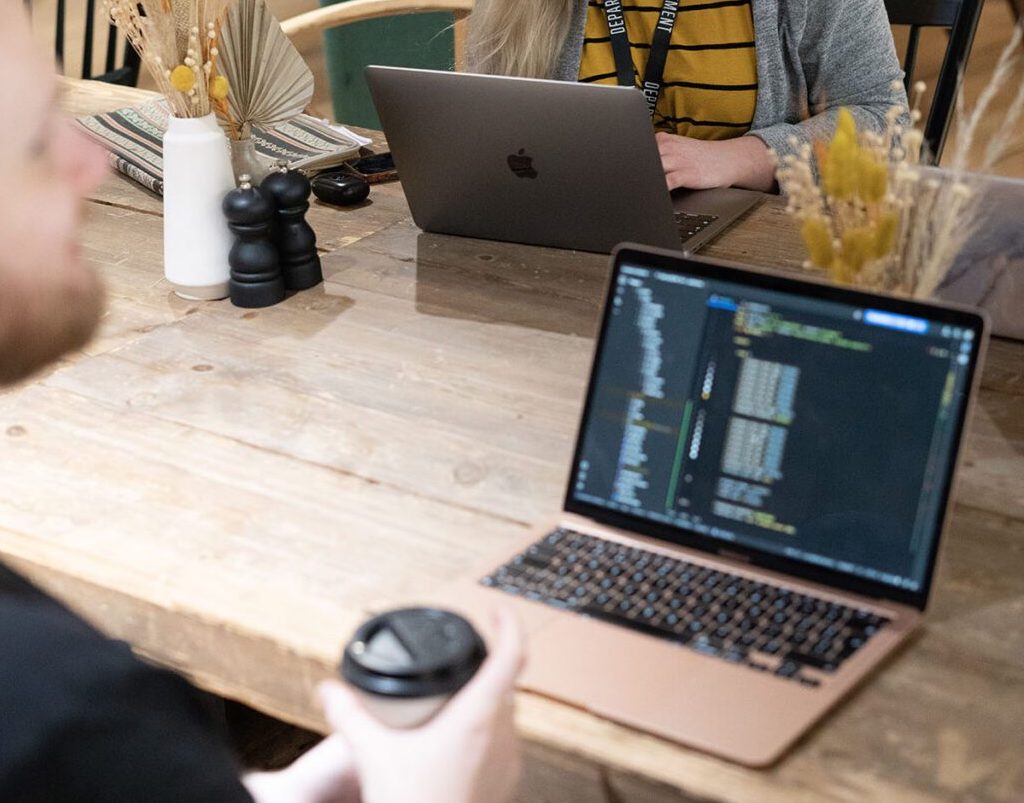One of our developers Roy Ho joined Ultimate after moving to the UK from Hong Kong. He has written this blog to give us here at Ultimate an insight into what the Lunar New Year is, what it symbolises and how he celebrates it!
This weekend is the Lunar New Year (Chinese New Year). It is the beginning of the new year based on the lunar calendar. One of 12 animal symbols of the Chinese zodiac (Rat, Ox, Tiger, Rabbit, Dragon, Snake, Horse, Goat, Monkey, Rooster, Dog and Pig) represent each year of the Chinese lunar calendar. For 2024, it’s the Year of the Dragon, beginning on 10th Feb, 2024.
The original concept of “year” is related to ancient astronomical rhythms and the periodicity of crop growth. What ancient humans were most concerned about was a good harvest and an abundance of food. When the crops had a good harvest, people couldn’t help but celebrate. Over time, it became the most important festival in the year.
In ancient Chinese characters, the word “nian年” has a symbolic meaning of fruit harvest and ripe ears of grain. People had the folk custom of celebrating the harvest and welcoming the new year, and later it gradually became an established traditional festival.
Tradition in Hong Kong:
Home cleaning
On the days immediately before the New Year celebration, Chinese families give their homes a thorough cleaning. There is a Cantonese saying “Wash away the dirt on nin ya baat” (Chinese: 年廿八,洗邋遢), but the practice is not restricted to nin ya baat (the 28th day of month 12). It is believed the cleaning sweeps away the bad luck of the preceding year and makes homes ready for good luck.
Spring festival couplet/ Fai Chun 揮春
There will be pieces of red paper with words that are hung on the walls, windows or doors for decoration and good luck.
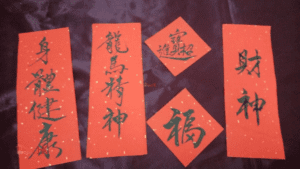
Family reunion dinner 團年飯
A reunion dinner is held on New Year’s Eve during which family members gather for a celebration. The venue is usually in or near the home of the most senior members of the family. The New Year’s Eve dinner is very large and sumptuous and traditionally includes dishes of meat (namely, pork and chicken), fish and seafood.
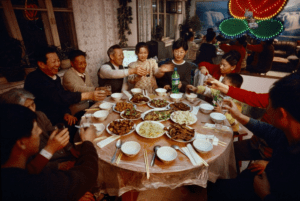
Firecrackers
Entering the first day of the first lunar month at 12 o’clock in the morning, firecrackers must be set off. The meaning of this is “farewell to the old and welcome the new”.
Dragon dances/ Lion dances
Dragon and lion dances are common during Chinese New Year. It is believed that the loud beats of the drum and the deafening sounds of the cymbals together with the face of the Dragon or lion dancing aggressively can evict bad or evil spirits. Lion dances are also popular for opening businesses in Hong Kong.
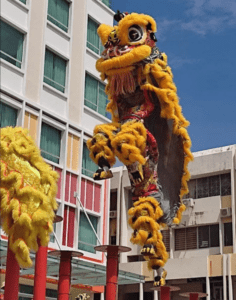
Visits to in-law and friends
Normal traditions occurring on the first day involve house gatherings, specifically to the houses of the oldest and most senior members of extended families. This is usually parents, grandparents and great-grandparents.
You may also visit friends to celebrate together, during the gathering you may play some games or play Mahjong打麻雀.

Greeting for Lunar New Year
i) San nin fai lok! 新年快樂!
This means “Happy Lunar New Year”
ii) Kung Hei Fat Choy! 恭喜發財!
This means “I wish you a prosperous new year.”
Clothing
The colour red is commonly worn throughout Chinese New Year; traditional beliefs held that red could scare away evil spirits. The wearing of new clothes is another clothing custom during the festival, the new clothes symbolise a new beginning in the year.
Red packets/ lucky money
Red packets are passed out during the Chinese New Year’s celebrations, from married couples or the elderly to unmarried juniors or children. These packets contain money in an amount that reflects good luck and honourability.
Chinese candy box
A Chinese candy box is a traditional box used during Chinese New Year for storing candy and other edible goods.
Traditional Chinese New Year foods
Traditional Chinese New Year foods play a symbolic role in bringing about good luck for the year to come. Each traditional dish symbolises different elements believed to usher in a prosperous new year.
i) Fish
In Cantonese, the word for fish (魚 – yú) has the same pronunciation as 餘, which means ‘surplus’ or ‘extra’, signifying plenty of prosperity.
ii) Poon choi 盆菜
Poon choi is a uniquely Hong Kong dish, originating in village communities of the New Territories in Hong Kong. Families contribute whatever food they have to a large communal pot, which is then cooked and eaten over the course of the day. It symbolises unity and togetherness.
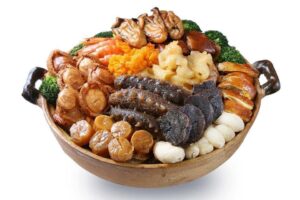
iii) Nin gou 年糕 (Year cake)
Nin gou is most popular during the Chinese New Year, it is considered good luck to eat nin gou during this time of the year because nin gou is a homonym for “higher year” or “grow every year”, which means a more prosperous year.

iv) Tong Yuen 湯圓
These delicious little round glutinous rice flour balls come in a variety of flavours and are served in soup or syrup. Loved for their chewy texture and sweet fillings like peanut, black sesame, red bean paste and even chocolate. These treats are best shared with family as their round shapes signify togetherness.
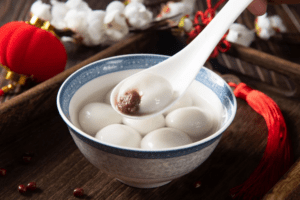
v) Fried dumplings
While dumplings are eaten all year round, yau gok 油角 are unique to Cantonese regions during Chinese New Year. The dumplings are shaped to resemble ancient Chinese currency, believed to bring about wealth and good fortune for the year ahead.
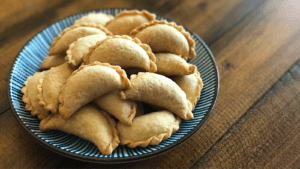
Here at Ultimate
To join the Lunar celebrations this year we have decided to join our virtual stand up this Friday wearing red! To find out move about the fun things we get up to at Ultimate check out our Life at Ultimate page!


